In the ever-evolving world of gardening, nurturing plants to their fullest potential is both an art and a science. As gardeners, whether you’re just starting out or have years of experience, you’re always seeking new ways to enhance the health and vitality of your cherished green companions. Epsom salt, a humble household staple, has been quietly revolutionizing plant care for generations, providing benefits that extend far beyond its simple appearance.
Imagine a garden where leaves shimmer with vibrancy, blooms burst forth in a riot of colors, and plants stand robust against the challenges of the environment. Epsom salt can be a secret ingredient in achieving this lush oasis, offering essential nutrients that support plant growth and resilience. In this article, you’ll discover how Epsom salt can be effectively incorporated into your gardening routine, enriching soil and invigorating plants with magnesium and sulfate—two elements vital for healthy development.
Join us on this journey to uncover the remarkable potential of Epsom salt in your garden. We will explore its role in improving nutrient absorption, enhancing flowering, and even deterring pests. By the end of this article, you will have the knowledge and confidence to use Epsom salt as a powerful ally in your gardening endeavors, creating a thriving, verdant sanctuary that reflects your passion and care.
Understanding Epsom Salt Benefits
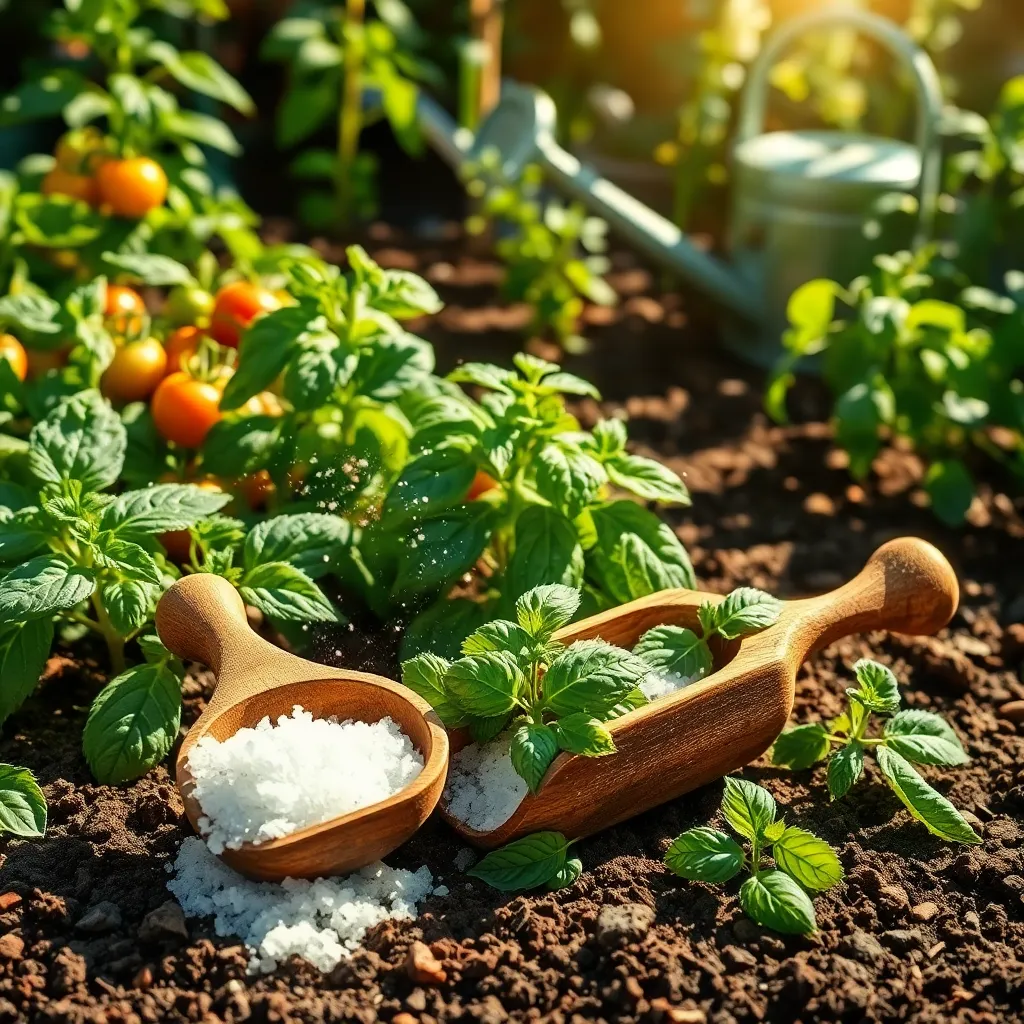
Many gardeners use Epsom salt to improve the overall health of their plants due to its high magnesium and sulfate content. These elements are essential for plant growth, aiding in processes like photosynthesis and nutrient absorption, which can result in more robust plants.
One practical way to use Epsom salt is by incorporating it into your watering routine. Simply dissolve one tablespoon of Epsom salt in a gallon of water and apply it to your plants every two to four weeks for optimal results.
For those growing tomatoes and peppers, Epsom salt can be particularly beneficial. These plants often suffer from magnesium deficiencies, and adding Epsom salt helps to increase fruit production and improve overall plant health.
It’s important to note that while Epsom salt can be helpful, it should not replace a balanced fertilization program. Regular soil testing is recommended to determine the specific needs of your garden and avoid over-fertilization.
Advanced gardeners might consider using Epsom salt as a foliar spray to quickly address magnesium deficiencies. Mix one tablespoon of Epsom salt with a gallon of water and spray directly onto the leaves for rapid absorption, especially during the growing season.
How Epsom Salt Boosts Growth
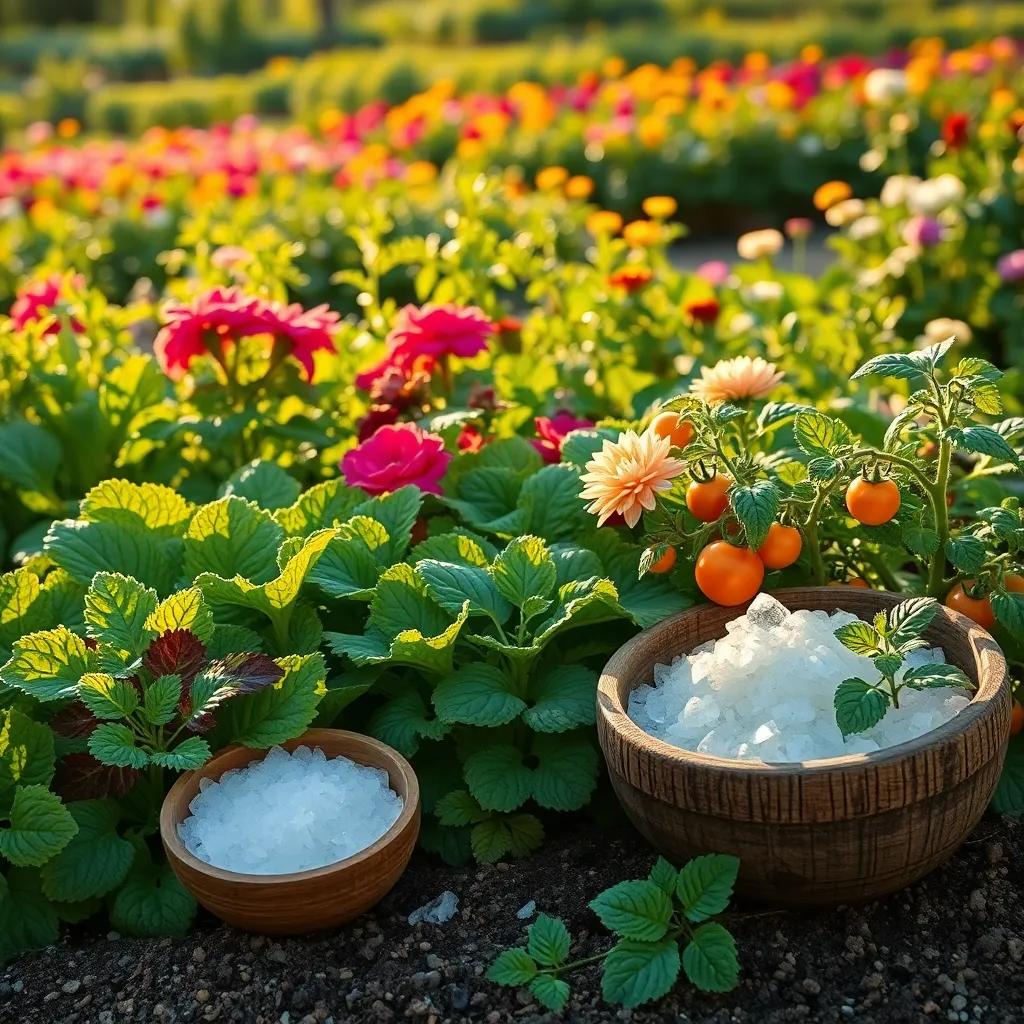
Epsom salt, chemically known as magnesium sulfate, plays a significant role in plant growth by providing essential nutrients. Magnesium aids in chlorophyll production, which is crucial for photosynthesis and overall plant health.
For optimal results, incorporate Epsom salt into your gardening routine by dissolving one tablespoon in a gallon of water. This mixture can be applied as a foliar spray or directly into the soil every two weeks, ensuring plants receive a steady intake of magnesium.
Tomatoes and peppers particularly benefit from Epsom salt, as they are prone to magnesium deficiencies. Sprinkle a tablespoon of Epsom salt around the base of each plant during the growing season to boost fruit production and prevent blossom end rot.
Advanced gardeners can conduct a soil test to determine existing magnesium levels before applying Epsom salt. This ensures that you are not over-fertilizing, which can harm plants and disrupt soil balance.
Application Methods for Plants
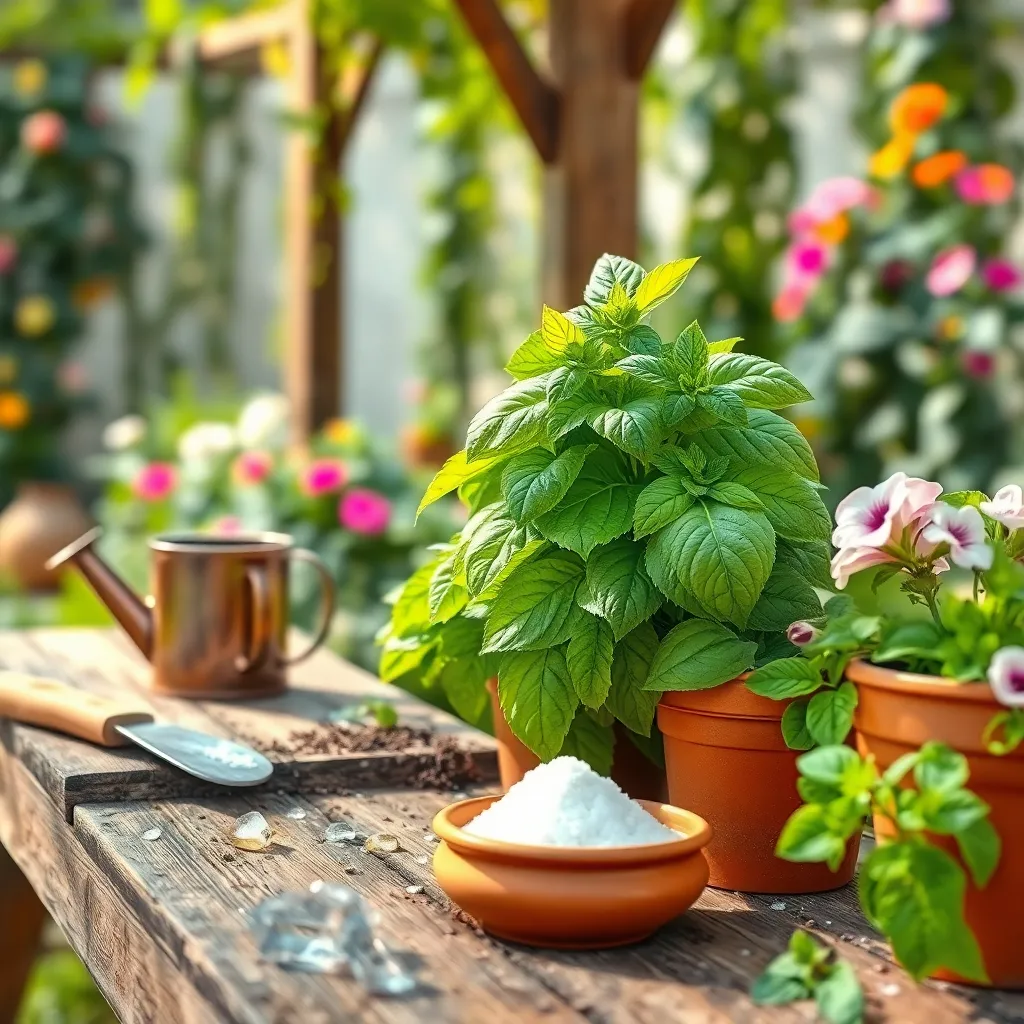
Applying Epsom salt to your plants can be done effectively through several methods, ensuring they receive the magnesium and sulfur they need. One common method is to dissolve one tablespoon of Epsom salt in a gallon of water and use it as a foliar spray or soil drench.
This solution can be applied every two to four weeks during the growing season for optimal results. Ensure you thoroughly spray the leaves and soil, allowing the nutrients to be absorbed efficiently by the plant.
For those with larger gardens, Epsom salt can also be directly sprinkled around the base of the plants and then watered in. Use about a teaspoon for small plants and up to a tablespoon for larger shrubs to avoid over-fertilization.
Advanced gardeners may choose to test their soil first to determine specific magnesium deficiencies before applying Epsom salt. Tailoring your application method based on soil needs can prevent nutrient imbalances and promote healthier plant growth.
Ideal Plants for Epsom Salt
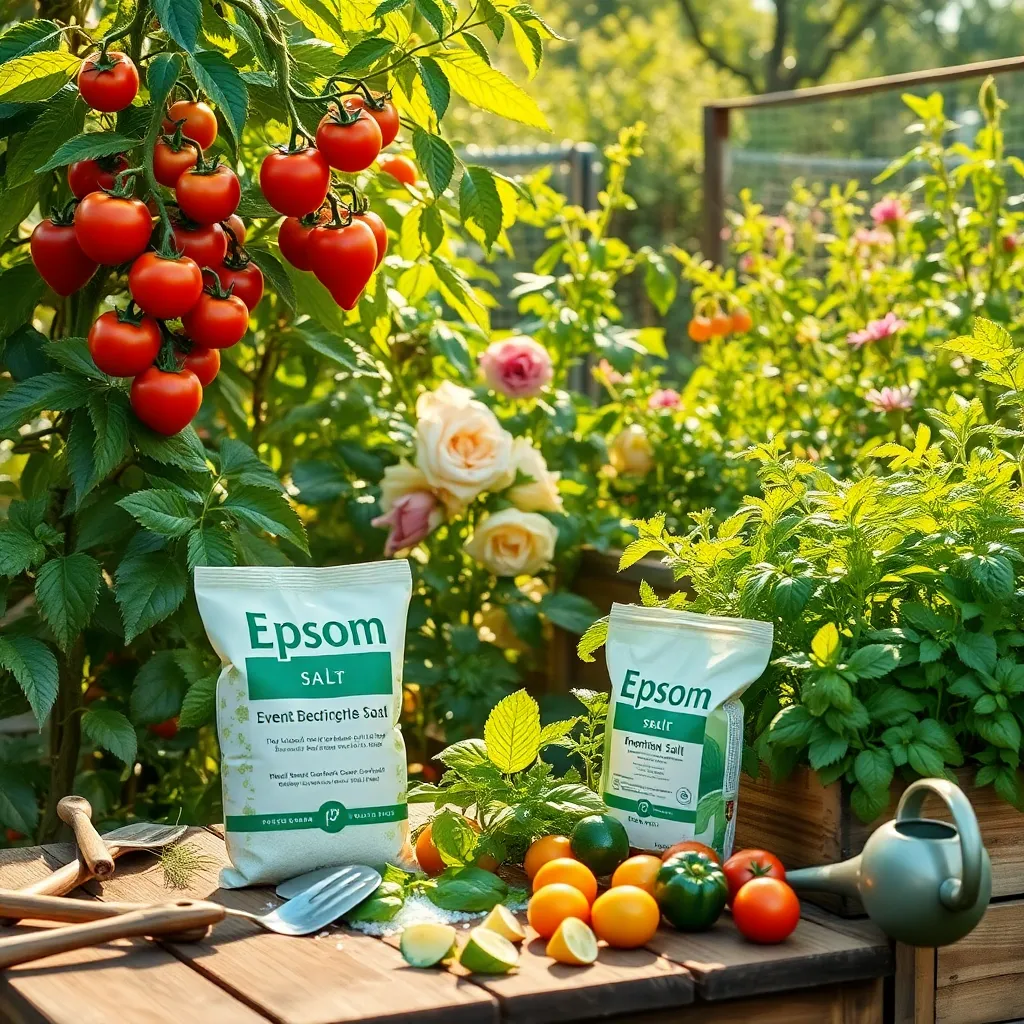
Many plants thrive when given a boost of Epsom salt, thanks to its high magnesium content which supports chlorophyll production. Tomatoes, peppers, and roses are particularly responsive, often showing improved growth and richer blooms.
Tomatoes benefit from Epsom salt applications, especially in magnesium-deficient soils. Sprinkle a tablespoon of Epsom salt around the base of each plant every two weeks to support strong stems and lush fruit development.
For peppers, Epsom salt can help mitigate common issues like yellowing leaves and poor fruit set. Dissolve one tablespoon in a gallon of water and apply it as a foliar spray during the growing season to maximize fruit yield.
Roses, known for their nutrient demands, can especially benefit from Epsom salt, which promotes bushier growth and more abundant flowers. Apply half a cup of Epsom salt around the base of each rose bush during planting and again in early spring to enhance flower production.
Monitoring Plant Health Changes
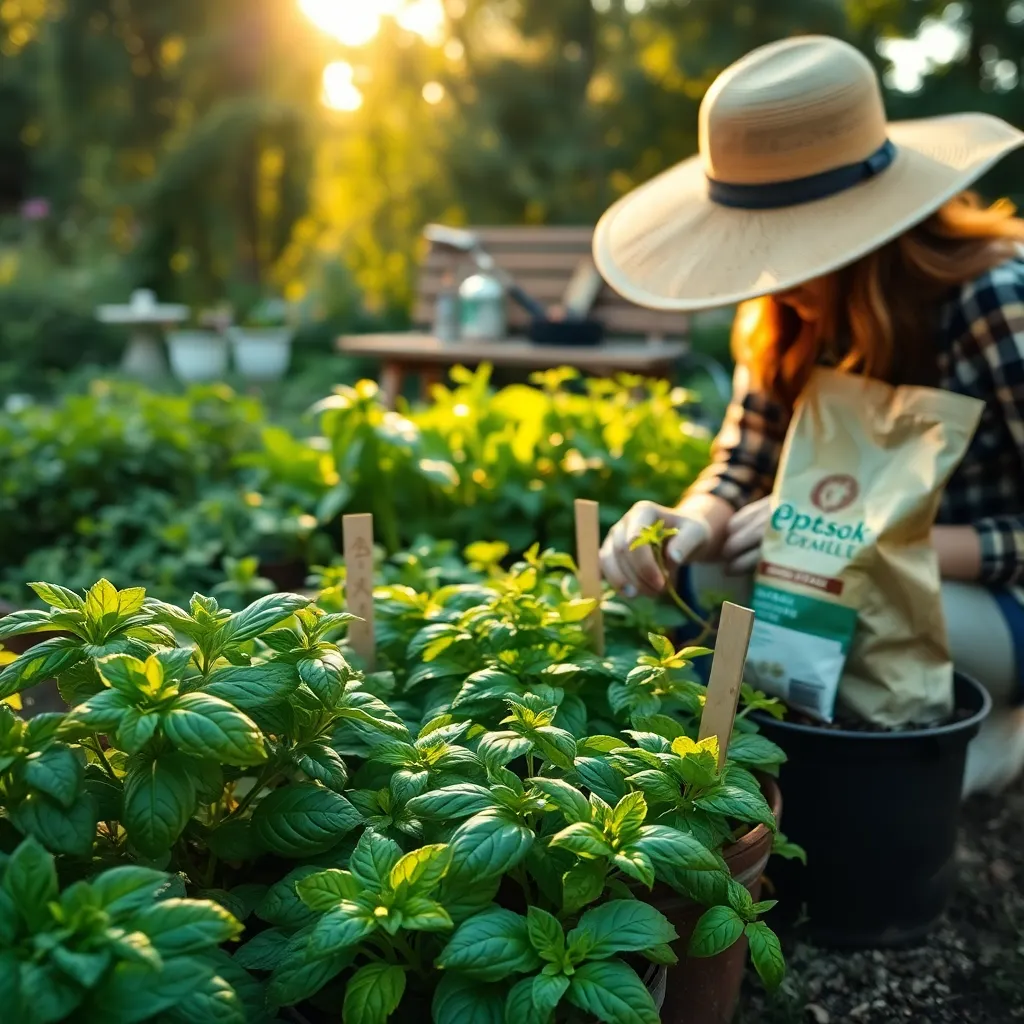
Monitoring plant health changes is crucial when using Epsom salt to ensure it benefits your garden effectively. Observe your plants closely for signs of improvement or distress, such as changes in leaf color or growth patterns.
To begin, establish a baseline by noting the current health and appearance of your plants before applying Epsom salt. This will help you track any positive or negative changes after treatment, giving you a clear picture of its impact.
Regularly check the leaves for signs of magnesium deficiency, which Epsom salt can help address. Yellowing between the veins of older leaves is a common indicator that your plants might benefit from magnesium supplementation.
Ensure that your soil has the right pH balance, as Epsom salt is most effective in neutral to slightly acidic soils. Use a pH meter to measure your soil’s level, aiming for a pH of about 6.0 to 7.0 for optimal nutrient uptake.
Keep an eye on watering practices, as both overwatering and underwatering can affect nutrient absorption. Water your plants deeply but infrequently, allowing the soil to dry out slightly between waterings to promote healthy root systems.
Experienced gardeners can track plant health changes with a gardening journal, recording observations and results. This practice helps in identifying patterns and making informed adjustments to your care routine over time.
Conclusion: Growing Success with These Plants
In the journey of nurturing both plants and relationships, we’ve explored five key concepts: the importance of understanding unique needs, the role of consistent care, the impact of small yet meaningful acts, the value of patience, and the power of communication. Just as Epsom salt can rejuvenate plant health, these principles can breathe new life into our relationships, fostering deeper connections and understanding.
To embark on this transformative path, begin by choosing one area to focus on—whether it’s enhancing communication or practicing patience—and take immediate steps to implement change. Perhaps it’s a heartfelt conversation or a small gesture of kindness that can make all the difference.
Remember, this guide is a resource for ongoing growth. Bookmark or save it now to revisit these insights whenever you need a gentle reminder or a dose of encouragement. As you cultivate these practices, envision a future where your relationships flourish, grounded in mutual respect and love. With dedication and the right tools, success is not just possible; it’s inevitable. Let this be the start of a beautiful journey toward thriving relationships.

